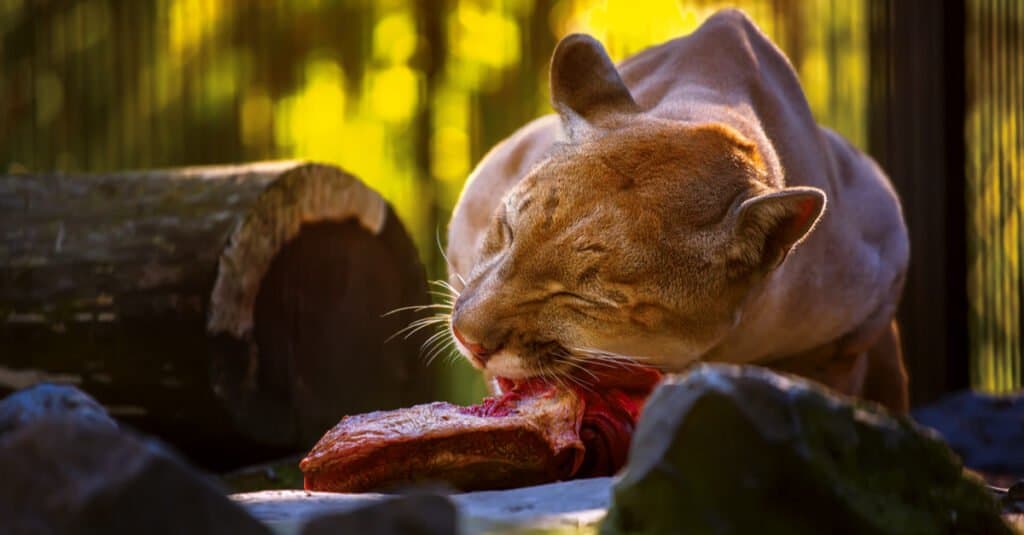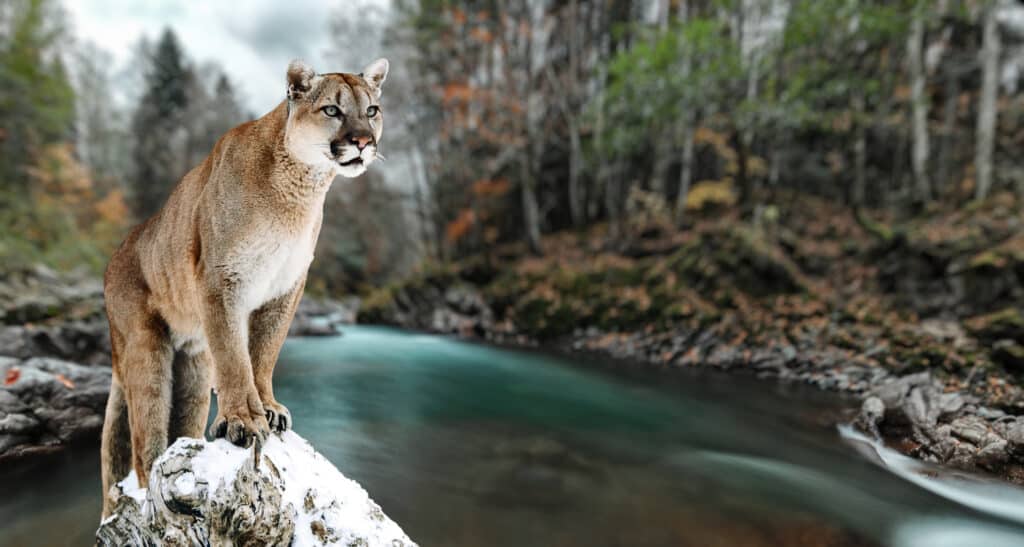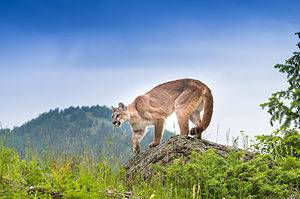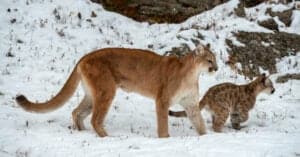Like most other lions, a core section of the mountain lion’s identity is its vicious teeth, which is how it maintains its status as an apex predator. The mountain lion is a big cat, native to the Americas, with several other names including cougar, puma, and panther, to mention just a few. Scientifically known as the Felis concolor, the mountain lion has a carnivorous diet that necessitates its strong set of teeth. This article delves into more explicit and informative details about the mountain lion’s teeth. Let’s dive right in.
Mountain Lion Teeth
Mountain lions possess a vicious and formidable set of teeth, which as we mentioned earlier, is core to their identity and status as apex predators. If they didn’t have teeth, they’d very likely be at the bottom of the food chain.
As is the case with most large cats, the mountain lion’s teeth are quite pronounced and are one of its scariest features. The mountain lion’s teeth can be divided into three parts, namely the carnassial teeth, canine, and incisors. The carnassial is characteristically sharp and long and it helps with cutting up and lacerating prey which then makes it easier for them to feed. Canines are razor-sharp and thick and are utilized by mountain lions for thorough piercing or puncturing. The incisors are rather small and they are the straightest of the three; they are the sub-teeth responsible for chewing.
Besides the premolars and molars which make up the carnassial, mountain lions also have a small premolar on either side of their upper jaws. In total, mountain lions have 30 teeth – 16 upper and 14 lower teeth.
How Big Are Mountain Lions Teeth?

Mountain lion growl
©Chris Alcock/Shutterstock.com
Mountain Lions, like most large cats, have some of the biggest teeth in the animal kingdom. Little wonder they have an array of prey and almost zero natural predators. In general, the teeth of a mountain lion are 2 inches long which is curiously the same as the size of its claws.
The canines and the carnassials are the largest of the mountain lion’s teeth while the incisors are the smallest of the trio.
What Is the Bite Force of a Mountain Lion?

The bite force of a mountain lion is 400 PSI.
©Ipatov/Shutterstock.com
Mountain lions are natural biters with a bite force of approximately 400 pounds per square inch (PSI) that helps with their predatory expeditions. Thanks to their vicious teeth, one bite from the mountain lion will do incredible damage to the skin of any living thing, including humans, and may even be brutal in some cases.
They are naturally predisposed to biting the head or neck of their prey while inflicting further damage with their paws, which effectively weakens the prey.
In addition to their bite force, they also possess incredible stealth which allows them to sneak up on their prey.
Do Mountain Lions Lose Their Teeth?

Mountain lions can lose their teeth.
©Evgeniyqw/Shutterstock.com
Mountain lions, like other animals and even humans, can lose their teeth. This can happen either naturally or when the mountain lion bites too hard while hunting.
Loss of teeth happens naturally to baby mountain lions known as cubs. During the first few months of their lives, mountain lion cubs develop baby teeth which fall out gradually and give way to the adult dentition that will serve them for the rest of their existence.
Mountain lions may also lose their teeth while hunting their prey and biting hard on a tough bone or any other rigid body parts. They may also lose their teeth while fighting other mountain lions.
Losing any of the incisors may not pose serious damage to the mountain lion’s hunting capabilities. However, if they lose any of their large canines, they might find it hard to successfully kill some of their favorite prey.
We must also mention that mountain lions lose their teeth due to the avarice of cougar hunters who hunt them as a lifestyle. These hunters reportedly target mountain lions, kill them, and get rid of some picturesque and intriguing parts like their teeth, which are often sold for cash and put on display in museums. This activity is known as poaching and it is generally frowned upon by animal activists and conservationists around the world.
If you see mountain lion teeth for sale, there is a good chance that it was gotten through that brutal activity, which is poaching.
Mountain Lion With Teeth Growing Out of Its Head
As is the case with other animals and even humans, mountain lions grow their massive teeth within the borders of their mouths. However, a strange event in 2016 occurred when a hunter in the U.S state of Idaho legally shot dead a mountain lion, and a set of fully formed teeth was found growing right out of its forehead.
Upon further evaluation by the Idaho Department Of Fish And Game, it was concluded that the poor thing either had some kind of tumor or the new set of teeth were remnants of a conjoined twin that died in its womb.
We must mention, however, that this is a rare, bizarre event that does not characterize the mountain lion species as a whole. Rather, it is an anomaly and the norm is that mountain lions only grow their teeth within their jaws.
Up Next:
- 11 Incredible Mountain Lion Facts
- Mountain Lion Poop: Everything You’ve Ever Wanted to Know
- Are Mountain Lions Endangered?
The photo featured at the top of this post is © Scott E Read/Shutterstock.com
Sources
- Animal Diversity Web, Available here: https://animaldiversity.org/accounts/Puma_concolor/
Thank you for reading! Have some feedback for us? Contact the AZ Animals editorial team.






